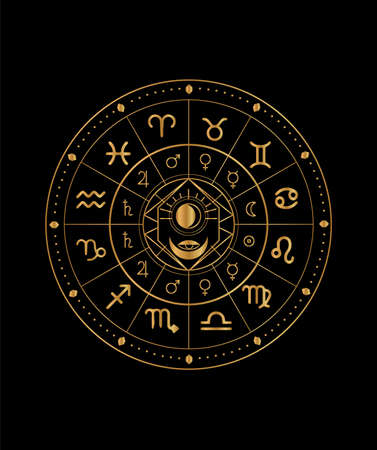Introduction to Grahas and Their Role in Marriage
In the sacred tradition of Indian astrology, the planets, known as Grahas, are revered as divine entities that influence every facet of human existence. Rooted deeply in Vedic scriptures, these celestial bodies are not merely astronomical objects; they are cosmic forces, each presiding over distinct aspects of an individuals destiny. When it comes to married life, the significance of Grahas becomes especially profound. The ancient sages of Bharat have described marriage as a sacred samskara—a rite that unites two souls on both earthly and spiritual planes. In this journey, the planetary lords guide, bless, and sometimes challenge the union, shaping harmony or discord according to their cosmic will. According to Jyotish Shastra (Vedic astrology), every Graha—be it Surya (Sun), Chandra (Moon), Shukra (Venus), or Mangal (Mars)—holds sway over particular areas of marital bliss, compatibility, and growth. The interplay of these energies determines not only the timing and quality of marital unions but also the enduring bond between partners. Thus, understanding the role of Grahas in married life is central to Indian astrology, offering seekers timeless wisdom for nurturing conjugal harmony.
2. Kundali Matching: The Sacred Union of Horoscopes
In the ancient wisdom of Indian astrology, the practice of Kundali Milan stands as a cornerstone ritual in the journey towards marital harmony. Before two souls unite in marriage, their birth charts—known as Kundalis—are meticulously matched to unveil the cosmic blueprint that governs their union. This sacred process, deeply rooted in Vedic tradition, is believed to align not only the individuals but also their families and destinies.
The Eightfold Path: Ashtakoota System and Gunas
Kundali matching primarily employs the Ashtakoota system, where eight unique aspects or kootas are analyzed. Each koota reflects a different dimension of compatibility, such as mental disposition (Gana), health and longevity (Nadi), and emotional connection (Bhakoot). These are further translated into points, known as Gunas. Out of a total 36 Gunas, a minimum score of 18 is traditionally considered auspicious for harmonious matrimony.
| Koota (Aspect) | Maximum Points (Gunas) | Significance in Marriage |
|---|---|---|
| Varna | 1 | Spiritual compatibility & ego balance |
| Vashya | 2 | Mutual attraction & control dynamics |
| Tara | 3 | Lifespan and health compatibility |
| Yoni | 4 | Sexual & biological compatibility |
| Graha Maitri | 5 | Mental & emotional bonding |
| Gana | 6 | Natures & behavioral traits alignment |
| Bhakoot | 7 | Family well-being & prosperity outlooks |
| Nadi | 8 | Genetic compatibility & progeny prospects |
| Total Gunas Possible: | 36 | |
The Role of Doshas: Malefic Influences and Remedies
No Kundali analysis is complete without examining Doshas (flaws), such as the notorious Mangal Dosha (Mars affliction). These planetary blemishes can bring challenges, delays, or discord in married life. However, Vedic astrology offers time-honored remedies—pujas, mantras, and rituals—to appease malefic influences and restore cosmic balance.
Cultural Reverence for Planetary Positions
The positions of planets at the time of birth—their houses, strengths, conjunctions, and aspects—form the subtle language through which Rishis have interpreted marital harmony for millennia. In Indian culture, seeking astrological guidance before marriage is seen not merely as custom, but as an invocation of divine order and family blessings. Thus, Kundali matching continues to guide countless couples towards a harmonious grihastha ashrama—the sacred phase of household life.

3. Benefic and Malefic Planetary Influences
Within the sacred science of Jyotish, the distinction between benefic (Shubha) and malefic (Ashubha) planetary influences forms the very heart of marital astrology. In the Indian astrological tradition, these energies are not merely labels but are seen as cosmic forces that shape the harmony, bliss, or turmoil within married life.
Shubha Grahas: The Blessings of Benefic Planets
Planets such as Jupiter (Guru), Venus (Shukra), Mercury (Budh), and to some extent, a well-placed Moon (Chandra), are considered Shubha Grahas. Their presence in key houses like the 7th (Kalatra Bhava), 2nd, or 4th can bring forth auspiciousness, mutual respect, prosperity, and affectionate companionship in marriage. Classical texts extol the union of Jupiter’s wisdom and Venus’s love as harbingers of harmony between partners, fostering understanding and dharmic alignment in household life.
Ashubha Grahas: Navigating Malefic Influences
Conversely, planets such as Saturn (Shani), Mars (Mangal), Rahu, and Ketu are often termed Ashubha due to their potential to create obstacles or tensions. Malefics in sensitive positions—especially the 7th house or aspecting marital significators—can manifest as delays in marriage, misunderstandings, emotional distance, or even separation. For instance, Mangal Dosha is a widely recognized condition where Mars’s placement may ignite conflicts unless remedied through traditional rituals or conscious compatibility efforts.
The Nuance of Placement and Association
It is essential to recognize that no planet is inherently detrimental or beneficial for all charts; rather, their effects depend on dignity, association with other planets (yogas), and aspects received. A well-aspected Saturn can bestow patience and commitment, while an afflicted Venus may lead to indulgence or disharmony. Thus, classical Jyotish emphasizes holistic analysis over rigid categorizations.
Manifestation in Marital Bliss or Challenges
The interplay between Shubha and Ashubha planets weaves the fabric of married life—granting periods of joy or testing one’s resolve through trials. As per Vedic wisdom, recognizing these influences allows individuals to perform remedies (upayas), cultivate understanding, and align actions with dharma for greater conjugal harmony.
4. Key Planets Governing Matrimonial Happiness
In the sacred tradition of Indian astrology, the harmonious orchestration of marital bliss is attributed to the powerful influence of certain grahas (planets). Each planet bestows its unique energy upon the marital sphere, shaping the destiny and compatibility between partners. The interplay of these celestial bodies—primarily Venus (Shukra), Jupiter (Guru), Mars (Mangala), along with other significant planets—determines the course of married life, prosperity, and conjugal happiness as elucidated in Vedic scriptures.
Venus (Shukra): The Karaka of Marriage
Venus is revered as the principal karaka (significator) for marriage and sensual pleasures. In both men’s and women’s horoscopes, a well-placed Shukra ensures marital harmony, romance, mutual understanding, and material comforts. An afflicted Venus may lead to discord or lack of satisfaction in wedlock, reflecting the ancient wisdom: “Yatra Shukra tatra Sukham”—where there is Venus, there is happiness.
Jupiter (Guru): The Blessing Giver
Jupiter’s benevolent aspect fosters dharma (righteousness), wisdom, and growth within marriage. For women, Jupiter directly signifies husband and marital fortune. A strong Guru brings stability, trust, and spiritual connection between spouses. Its malefic placement or weak influence can delay marriage or cause disharmony.
Mars (Mangala): The Energy of Passion and Conflict
Mars governs passion, courage, and at times aggression in relationships. Its position is carefully analyzed for Manglik Dosha—a key consideration in traditional Indian matchmaking rituals. Unfavorable Mangala placements may manifest as arguments or separation unless properly balanced by auspicious yogas.
Other Grahas and Their Role
The Moon (Chandra) impacts emotional bonding; Mercury (Budha) influences communication; Saturn (Shani) governs endurance and long-term commitment. The Sun (Surya) imparts authority and vitality to marital bonds.
Overview Table: Planetary Impact on Marital Life
| Planet (Graha) | Sanskrit Name | Main Influence on Marriage |
|---|---|---|
| Venus | Shukra | Love, Harmony, Sensuality |
| Jupiter | Guru | Blessings, Wisdom, Husbands Significator |
| Mars | Mangala | Passion, Courage, Manglik Dosha |
| Moon | Chandra | Emotional Bonding |
| Mercury | Budha | Communication Skills |
| Saturn | Shani | Permanence, Patience |
This intricate planetary symphony underscores the importance of thorough horoscope matching (Kundali Milan) in Indian culture. Only through understanding these planetary forces can one aspire to cultivate lasting joy and prosperity within married life as per the ageless guidance of Vedic astrology.
5. Remedial Measures and Rituals for Marital Harmony
In the sacred tradition of Indian astrology, when planetary influences disturb the harmony of married life, ancient Vedic wisdom prescribes powerful remedial measures to restore peace and balance. These remedies, rooted in the divine science of the Vedas, seek to harmonize the cosmic energies that govern matrimonial bonds.
Mantras: The Vibrations of Divine Protection
Chanting specific mantras is regarded as a direct invocation of celestial blessings. For instance, reciting the Mahamrityunjaya Mantra or Gauri Shankar Mantra is believed to pacify malefic planets like Mars (Mangala) and Venus (Shukra), whose afflictions can bring discord in marriage. Consistent and heartfelt chanting, often advised on auspicious days or during special muhurats, purifies the mind and aligns one’s aura with positive vibrations.
Yagnas and Homas: Fire Rituals for Purification
The sacred fire ceremonies—yagnas and homas—are central to Vedic remediation. Performing a Kumbha Vivah or Mangal Dosh Nivaran Yagna, under the guidance of learned pandits, invokes divine forces to neutralize doshas (flaws) caused by planetary imbalances. The offerings made into Agni (the fire deity) symbolize surrendering one’s troubles, allowing transformation through spiritual energy.
Gemstone Wearing: Harnessing Planetary Power
The use of gemstones is a time-honored remedy in Jyotish Shastra. Wearing gems such as Blue Sapphire for Saturn (Shani), Coral for Mars (Mangala), or Diamond for Venus (Shukra), prescribed after careful analysis of one’s kundali (natal chart), channels beneficial planetary rays into the wearer’s aura. It is essential that these stones are energized with proper rituals and worn on auspicious days to maximize their efficacy.
Temple Visits and Ritual Offerings
Pilgrimages to sacred temples and performing specific rituals—like abhishekam (ritual bathing of deities) or lighting ghee lamps—help appease the ruling grahas (planets). For example, offering prayers at Navagraha temples or participating in Swayamvara Parvati puja is said to enhance marital bliss and foster understanding between partners.
Cultural Faith and Collective Practice
The strength of these remedial measures lies not just in their ritualistic precision but also in the collective faith of those who perform them. In Indian culture, such practices are woven deeply into community life, reinforcing hope and unity among couples facing astrological challenges. By embracing these Vedic remedies with devotion, individuals invite harmony and celestial grace into their married journey.
6. Cultural Beliefs and Regional Practices
Within the vast tapestry of Bharat, the influence of Grahas (planets) on married life is not only interpreted through ancient Vedic scriptures but also beautifully intertwined with regional customs and societal beliefs. From the snow-capped peaks of the Himalayas to the lush fields of Tamil Nadu, each region has evolved unique practices reflecting their reverence for cosmic forces shaping matrimonial harmony.
North Indian Traditions: Rituals and Remedies
In the heartlands of North India, marriage is approached with profound astrological scrutiny. Families often consult learned Pandits to match horoscopes, seeking auspicious Yogas and Doshas that may bless or challenge marital bliss. The concept of Kundali Milan, with its sacred Ashtakoota system, forms the backbone of alliance selection. Furthermore, dowry rituals—though a subject of social reform—are sometimes justified through planetary afflictions, where specific planets like Shani or Rahu in malefic positions are believed to necessitate additional offerings or charitable acts to appease their influence.
Central Indian Nuances: Faith and Festivals
Moving towards Central India, beliefs merge with folk traditions. Here, planetary influences are honored during festivals like Teej and Karva Chauth, where wives fast and pray for their husbands’ longevity and conjugal happiness. These rituals are considered effective in mitigating negative planetary effects, especially those related to Mars (Mangal Dosha). Special pujas are conducted at local temples to pacify adverse planetary alignments impacting married life.
South Indian Perspectives: Nadi Dosha and Beyond
Southern India brings forth distinctive practices rooted in Dravidian wisdom. The matching process goes beyond simple horoscope compatibility; special attention is paid to Nadi Dosha, a unique aspect in South Indian astrology believed to affect progeny and wedded harmony. Should Nadi Dosha be detected, elaborate remedies such as performing Puja at sacred rivers or conducting Nava Graha Shanti homams are prescribed. In states like Kerala and Tamil Nadu, family astrologers play a pivotal role in guiding couples toward cosmic balance before solemnizing the union.
East and West Indian Variations: Community and Continuity
The eastern regions embrace Tantric traditions alongside Vedic ones, incorporating rituals like Kula Puja for ancestral blessings. Meanwhile, Western India emphasizes community involvement—public blessings during wedding processions symbolize collective support against adverse planetary influences. Here, societal beliefs often dictate unique solutions for complex Graha doshas, including group prayers or temple donations as a path to marital harmony.
The grandeur of India’s regional customs reflects an abiding faith in the subtle dance between celestial bodies and human destinies. Whether it is the meticulous matching of horoscopes in Uttar Pradesh or the remedial homams by the Cauvery River, these traditions serve as living testaments to India’s enduring belief in planetary influence upon marriage—a tradition both diverse and united under the eternal sky.


